Remodelling Tradition: Abraham Kritzman
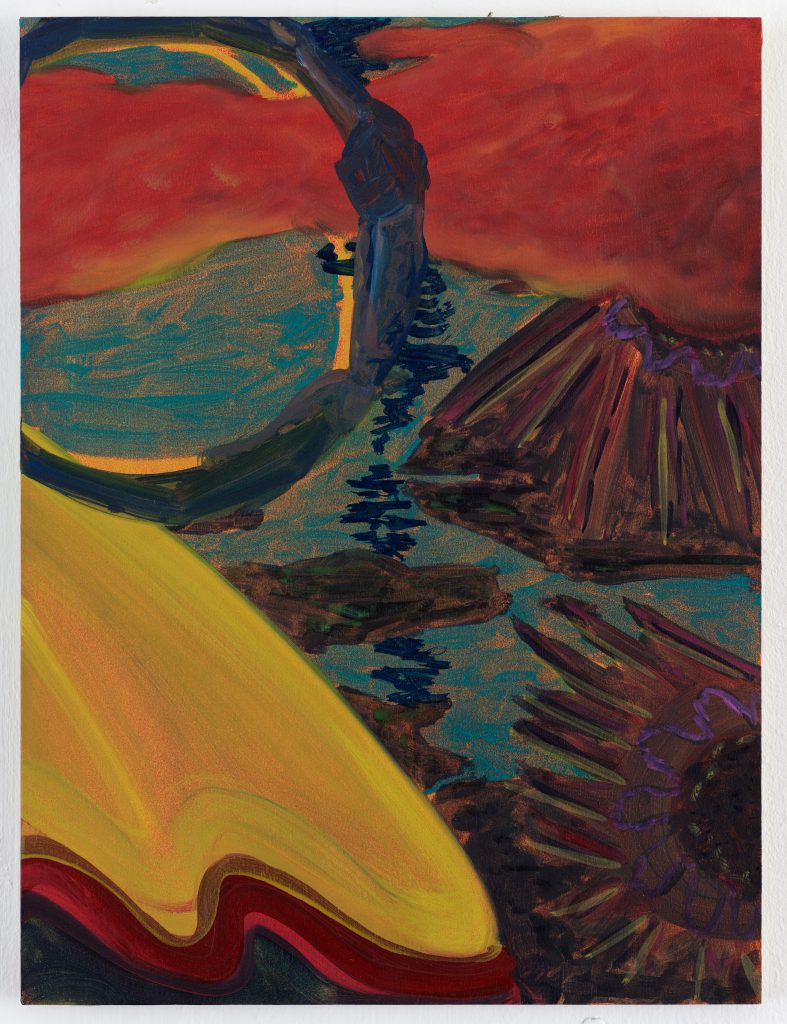
Abraham Kritzman’s practice spans across painting, sculpture, printmaking and installation. He is mostly inspired by travel, combining historical sources with modern techniques. Kritzman reworks tradition, always seeking to shift perspective and expectations.
Kritzman was born in Israel in 1983. He completed his BA in Fine art at the Bezalel Academy of Art and Design, Jerusalem (2011), where he now works as a tutor. Kritzman achieved his Masters in painting at the Royal College of Art in London (2014). Solo and duo exhibitions have been mounted at the Danielle Arnaud Gallery (London), the Artist’s House Tel Aviv (Israel), and the ODD & Atelier 35 (Bucharest). He is the recipient of several awards and scholarships, including the Minister of Culture Prize for Emerging Artists (2017). He currently resides between Israel and London.
FRONTRUNNER presents a chat with Kritzman, covering the diverse nature of his art and his plans for upcoming works.
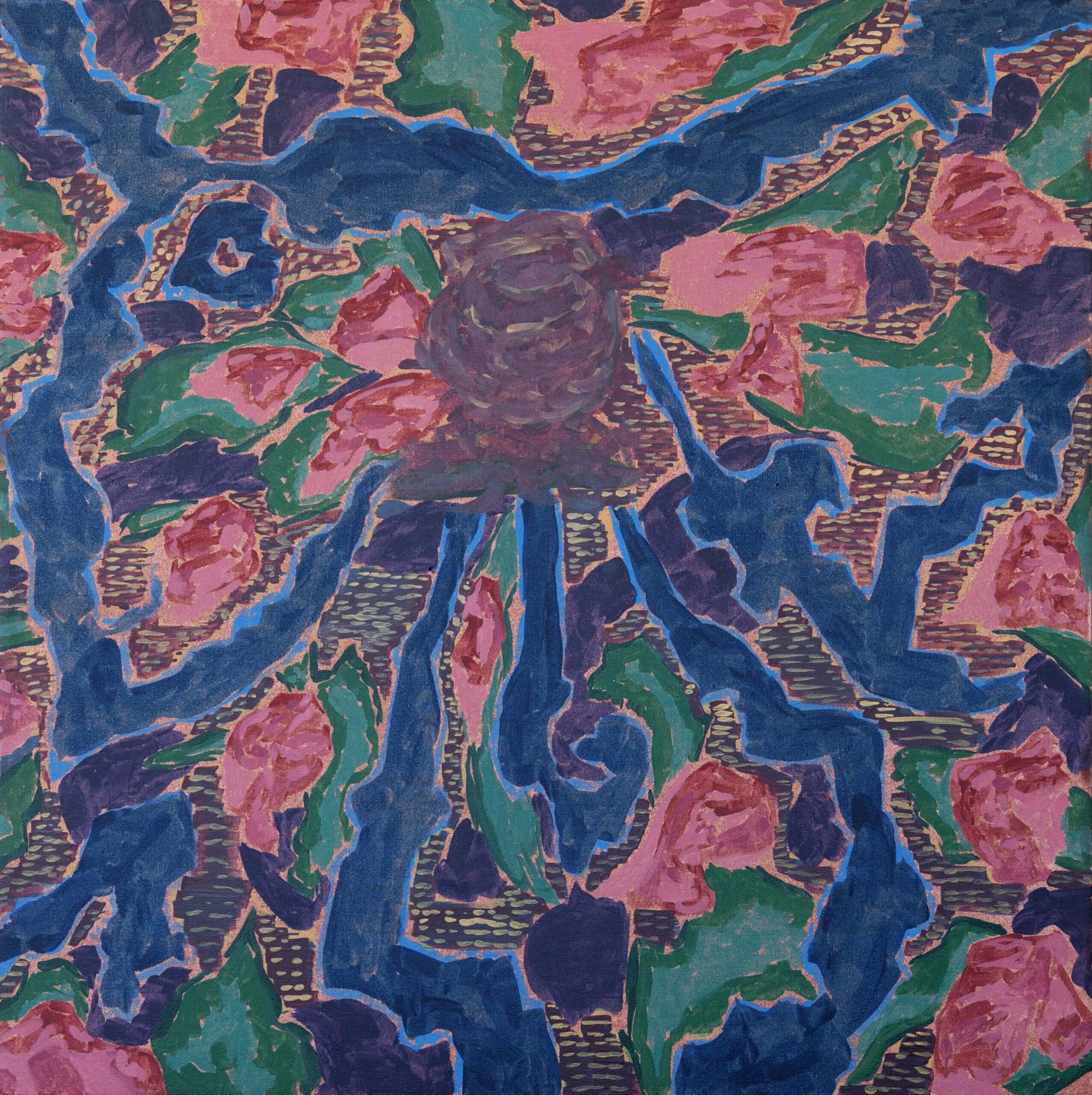
Overhead (2016)
Oil on canvas
85″ x 85″
Courtesy of the artist
Your work covers a variety of disciplines such as painting and sculpture. How did this interest in medium come about?
When I was studying my BA art course, I slipped into all different kinds of mediums. I was never bound to just one thing and I was always really drawn towards painting. Painting is my home turf – I try to expand what painting can do through other mediums. It’s very important for me to feel genuinely engaged with what I’m working on – maybe that’s why I use different media. In the last couple of years, I’ve been thinking about what the relationship is between all the different things that I’ve been making. All the paintings, drawings, prints and sculptures share a common DNA; but I really need to think about how to show them, because they can cancel each other out as well as sync together.
How has travel influenced your work?
I’ve been working mostly from travel that has been made through specific places. I’m interested in places that have a wide, rich history. For instance, I worked a lot from the Camino de Santiago route to Santiago de Compostela. Along the way you see a lot of places that have different elements from different times, so you have something that mixes tradition with the everyday. I’m really interested in how these things are layered, and I take a lot from that; both into the paintings and in the way that I plan my exhibitions. Imagination is also a big part of it – it’s intertwined with things that I’ve brought back to the studio. Mostly, I’m interested in challenging myself – the viewer comes second.
Tell me about the use of colour in your work.
I have a huge conflict between colour and the absence of colour. I usually work a lot in monochrome if I’m making a lot of prints. When I paint, I’m very busy trying to make a lot of detail – I work in layers and the different colour variations make the layers more visible. Another thing with colour is the way that it affects our emotion. Sometimes I use colour when I want things to be very intense and then I will have a series of very bright, colourful work. I enjoy it when I look at my own work and I rediscover things – it’s an experience that I would like the viewer to have too.
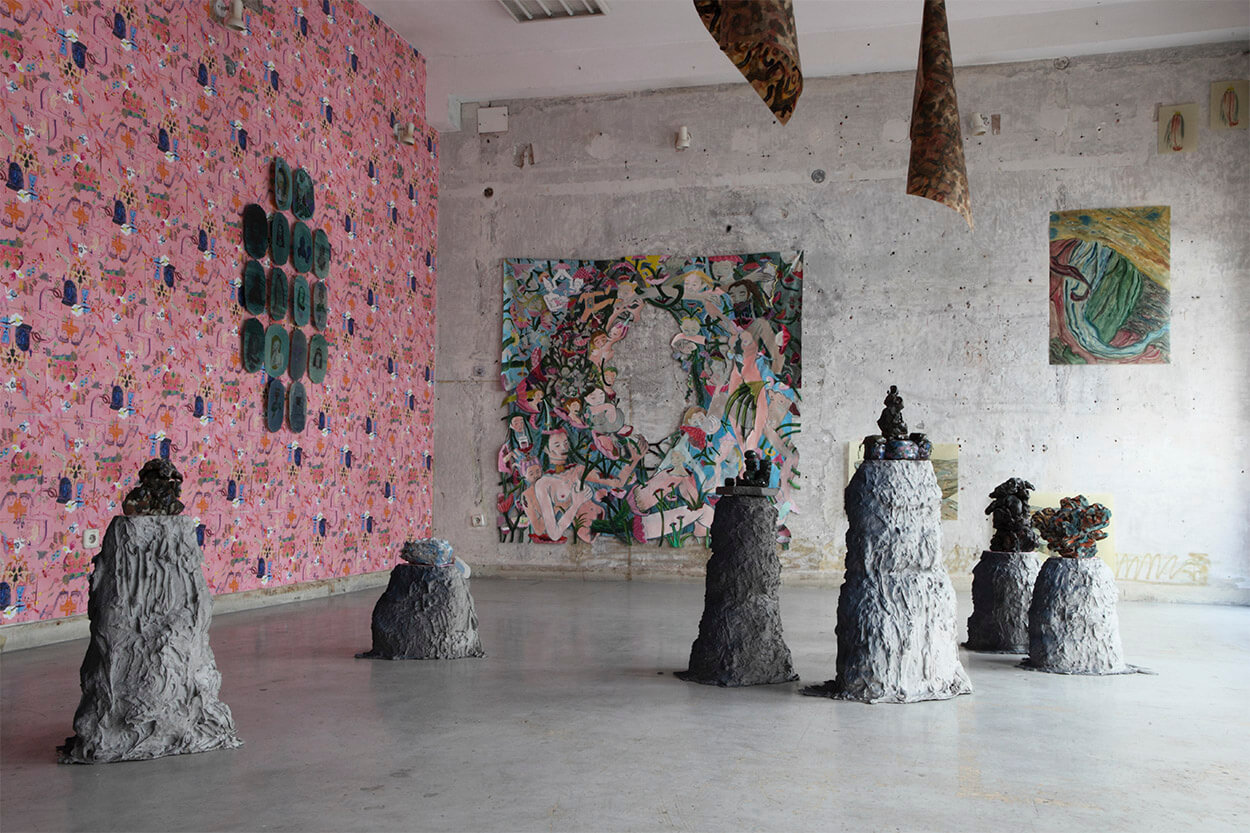
His Sprinkled Blood Served to Fructify Three Golden Apples (2015)
Installation view at ODD & Atelier 35 (Bucharest)
Courtesy of Abraham Kritzman
Doubling appears frequently in your work. How do you think this impacts the viewer’s experience?
It started by just trying to do one painting twice – simultaneously. I was curious to see what happened to the way that I paint or draw when I had to make the same gesture twice. There is something interesting about repetition; it’s a little bit like going somewhere twice. You have the first time that you go there – it’s a very unique experience, but the second time there is a sense of already knowing, so you feel like you can discover more. I did an exhibition called Returning (2019) and I made paintings where there are two of them and they’re scattered throughout the space. Every time you leave one painting and encounter another one, you have a sense of familiarity because you’ve already seen one part of that painting before. I felt like it was a very interesting way of experiencing an exhibition.
To date, which exhibition or show have you found most rewarding as an artist?
I think the most rewarding one was an exhibition that I did here in Israel. It was a collaboration with artist, Marlene Steyn and curator/ writer, Angels Miralda. It was very intense. We were working on almost 500 pieces of ceramics, prints, sculptures and paintings. There was something very rewarding about doing something with someone else. It’s not in every show you collaborate in that sense. It’s quite exceptional to do something like that; you kind of tap into someone else’s mind – It’s really mind-blowing. After that exhibition I think that my practice changed – not dramatically, but I understood a lot of things after working with Marlene so closely (she was a good influence). We are always influenced by people and artwork that we see around, but this was something very different. It was like another art school – going into someone else’s brain.
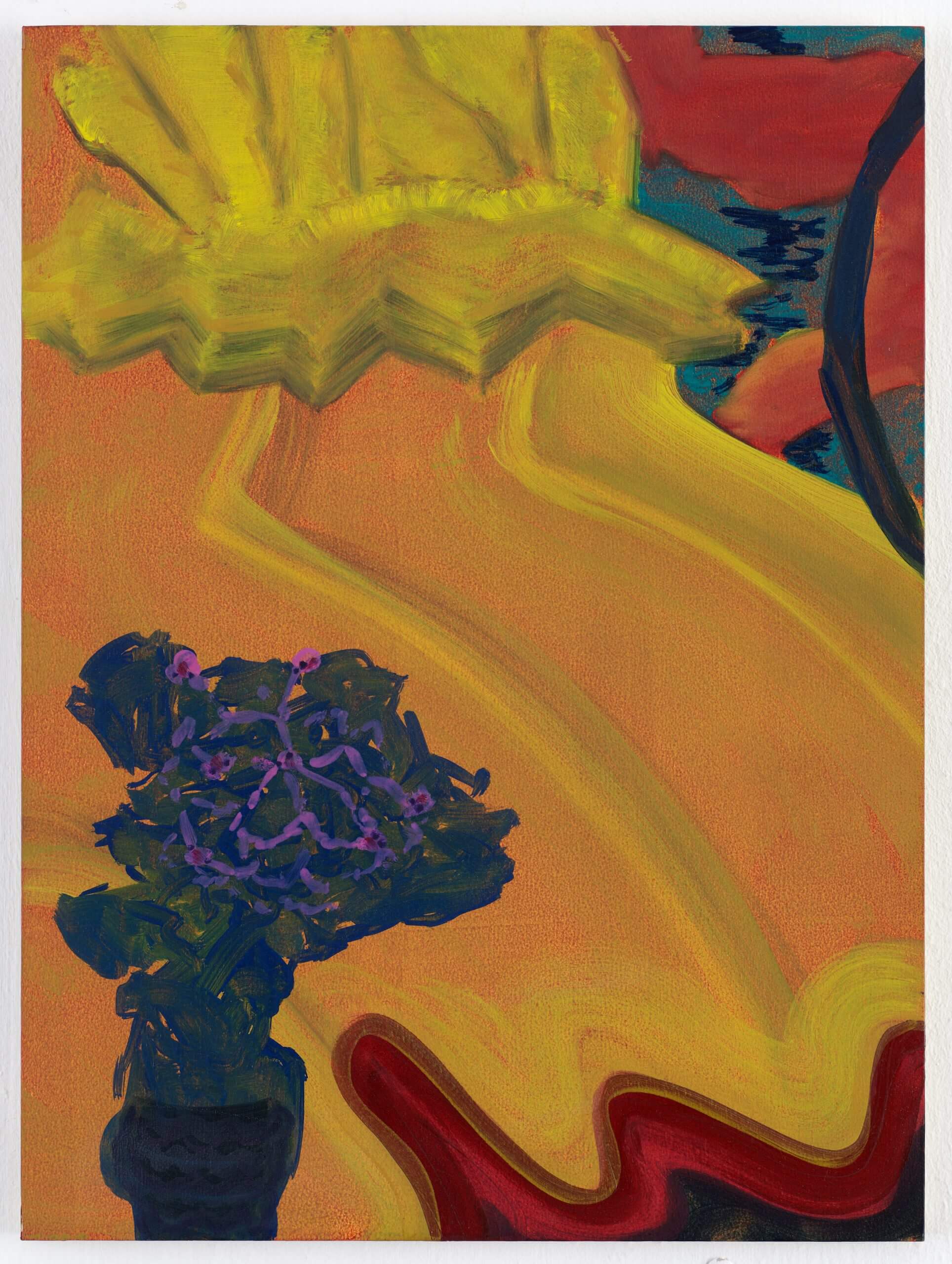
Downhill where flowers grow (2018)
Oil on wood panel
30″ x 40″
Courtesy of the artist
What advice would you give to young and upcoming artists?
There’s only one thing that really matters – that you work with things that you find pleasurable. If you’re really interested and curious about something, then once you’re in your studio and you are tapping into that, you know that you’re on the right track. I think the other thing that really helps out in the long-term is having good relationships with people that you find inspirational. I think that is very important for artists; having someone to talk to, to console with, and to sometimes hear some harsh criticism – that’s also very important.
What are your plans for future work?
I’ve made some new large-scale paintings which combine a sense of darkness with quite vibrant colour. They are from recent visits that I’ve done during Israel. I’ve never worked with materials that I’ve found in Israel – this is the first time, and I’m excited about it. Usually, in my work I paint very fast – I would work on a painting in 5 or 6 sittings and these ones will take maybe 4 months to make. They have 20 or 30 layers and each one is important – so they take time. I’m also simultaneously working on a new series of ceramic work.
What is missing in art? Is there anything you would change?
There is something about art that you can’t say something is missing. I would prefer that people came to exhibitions and looked at artworks without expecting to understand. The idea of understanding is something very problematic with art. If you understand it, then it is useless. I also think that there is something different in the art world in Israel, the art world in the UK, and in the states. So, if there is one thing that I long for, it’s for a bit more attention to the art world.








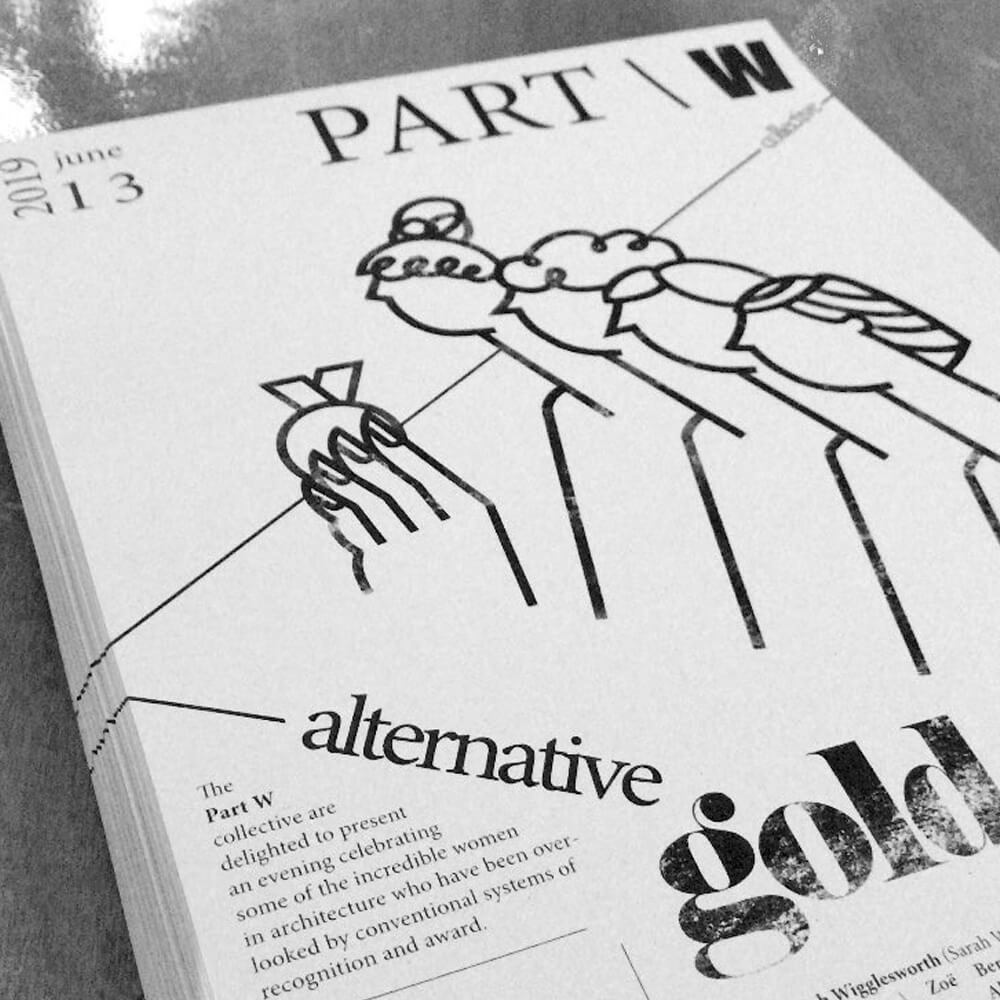
Responses